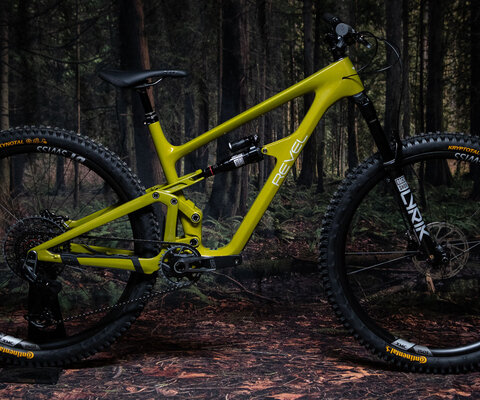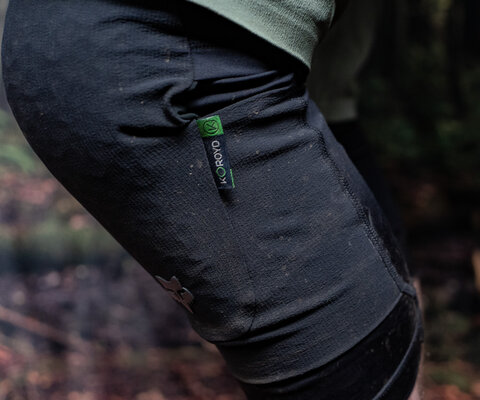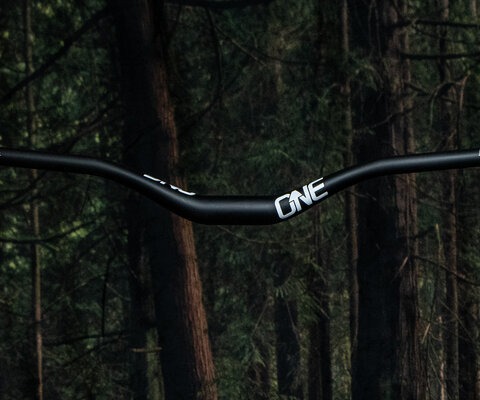
Vert To Dirt A Floridian's Evolution From Influential Skater to Devoted Mountain Biker
Words and Photos by Brett Rothmeyer
In Pete Thompson’s photography book, ‘93 til, which documents skateboarding through the 1990s, a quote from Tony Hawk appears alongside a black and white image of a man serenely floating on his back in a pool.
“The guy who was really revolutionary to me in the ‘90s was Mike Frazier,” the Hawk quote reads. “People have no idea about the difficulty, the creativity and the boundaries he was breaking, mainly because very few people were appreciating vert.”
For more than 30 years, Frazier reigned as a top professional vert skater. Today, at 50 years old, he still cheats gravity on a skateboard, though, on most days he can be found logging airtime through a different method: mountain biking at Alafia River State Park in central Florida.
He charges gaps and jumps at Alafia with the same aggression and determination that he displays on the walls of 13-foot ramps. Frazier only knows an “all or nothing” approach.
“I’ve done all of the other board sports,” Frazier said. “Nothing has felt as close to skating as being on a mountain bike.”
Growing up near the Gulf Coast of Florida, Frazier cut his teeth on backyard ramps and in competition at amateur National Skateboarding Association contests before turning pro and signing for Powell-Peralta in 1990. Through the peak of his career, his bold style and array of technical lip tricks earned him spots with some of skateboarding’s most influential brands and teams. Frazier still skates at an extremely high level; he recently appeared as part of Tony Hawk’s Vert Alert event in Salt Lake City, Utah.
Frazier’s pro career kicked off right at the beginning of a huge shift within skateboarding. The rockstar era of vert ramp skating, a time synonymous with crews such as the Bones Brigade that carry near folkloric status, was giving way to a more urban, scrappy discipline of the sport called street skating. For many old-guard pros, this change signaled an end to their careers, but a hungry, young Frazier pushed to join former teammate Tony Hawk as he formed the new Birdhouse team.
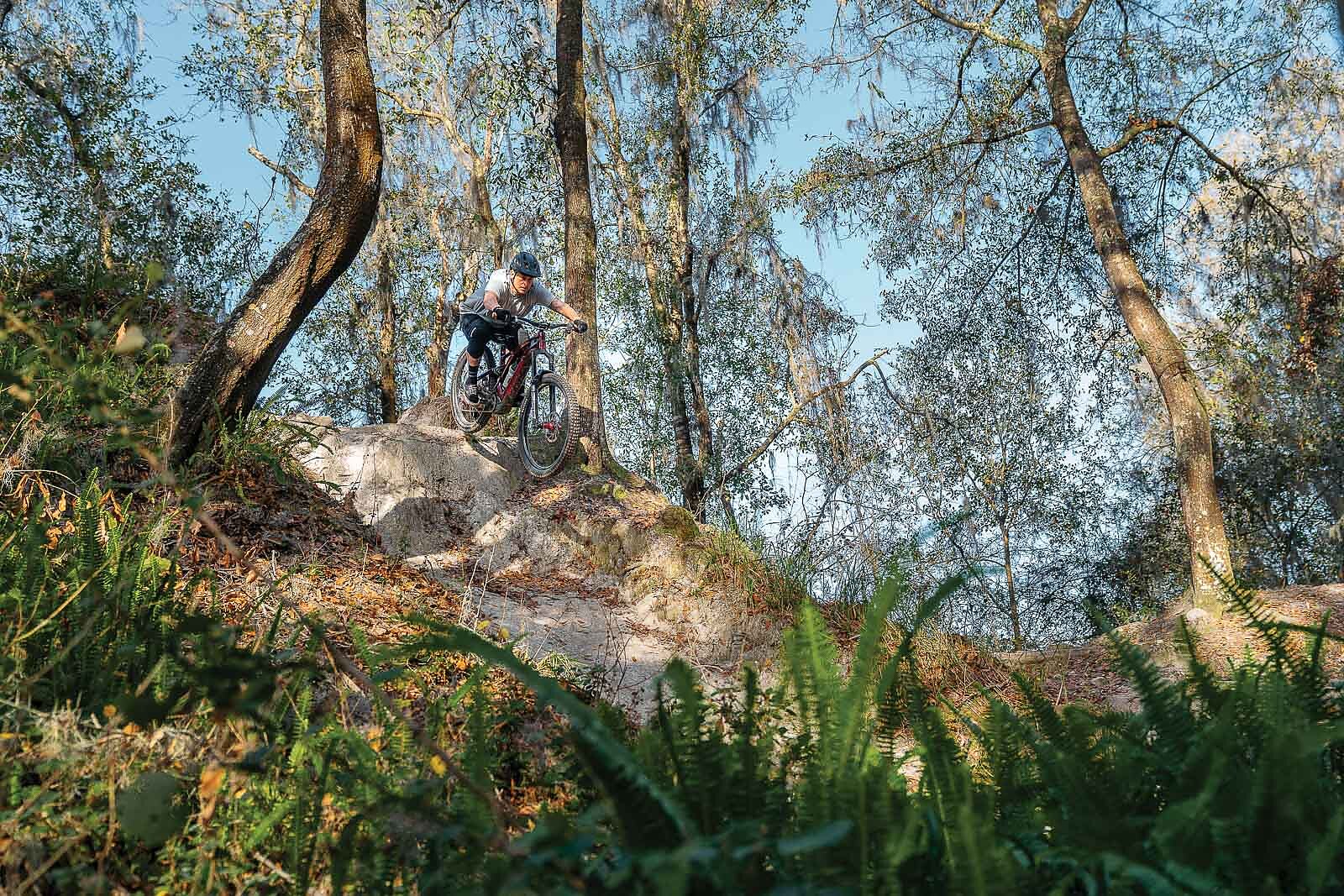
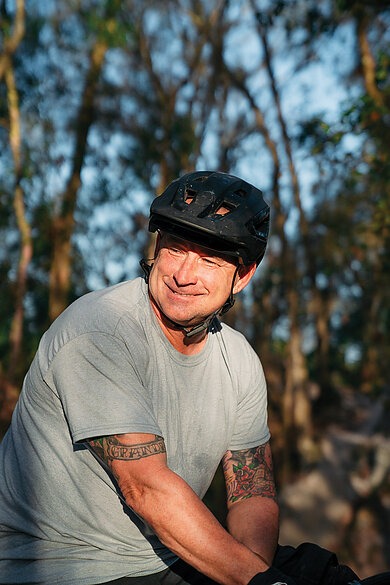
When Thrasher magazine declared skateboarding dead on the cover of its October 1993 issue, the sport was arguably entering its most progressive phase to date. New tricks were being created at a rapid pace, and the most intrepid vert skaters found ways to continue pushing what was possible by adopting moves born on the street and finding ways to integrate them on the ramp. Frazier was at the forefront—blending old and new into a powerful display of vert camp prowess.
But unlike his peers at the pinnacle of skateboarding, Frazier never moved to California, choosing instead to stay in Florida. And while the comforts of home had benefits, it also meant traveling for upwards of 250 days each year. Constant filming, competing, and putting on demo events during the annual Vans Warped Tour came with a price that his body eventually had to pay.
“I suffered my first real knee injury at 19,” Frazier said. “I ultimately would end up having 18 separate surgeries—knees, shoulders, wrist, ankles.”
Surgeries often put Frazier out of commission for months, and when a doctor eventually recommended cycling for rehab, he reached out to his old skate buddy, Darrin Rutledge, who, with his wife, Heather, now own AJ’s Bikes in Valrico, Florida.
“I bought a Giant Iguana hardtail in the late ‘90s and I would cruise some mild trails with Darrin,” Frazier said. “After a knee and a shoulder surgery [within] a 6-month window during 2006, I bought a road bike.”
Once he was healthy enough to ride, Frazier started exploring back roads near his home. The miles quickly piled up. Soon, his 20 and 40-mile rides expanded into 5:30am starts for all-day centuries, then double centuries. His endurance obsession once led him to ride across Florida and back home again, covering some 350 miles in a single day just to see if he could do it. In the early days of Strava, the ride-tracking app company held a competition to see which of its users could ride the most miles in a single month. Frazier battled it out in the top 3, riding upwards of 900 miles every week.
Fitness wasn’t his only motivation. Frazier’s brother passed away during this period and long, lonely miles on the road became a mental refuge—a cathartic activity when he needed it most.
“When I lost my brother, I didn’t want to skate or really do anything,” Frazier said. “[Riding] was the only thing that really got me moving again; I would put in headphones and go for a 5 to 6-hour ride.”
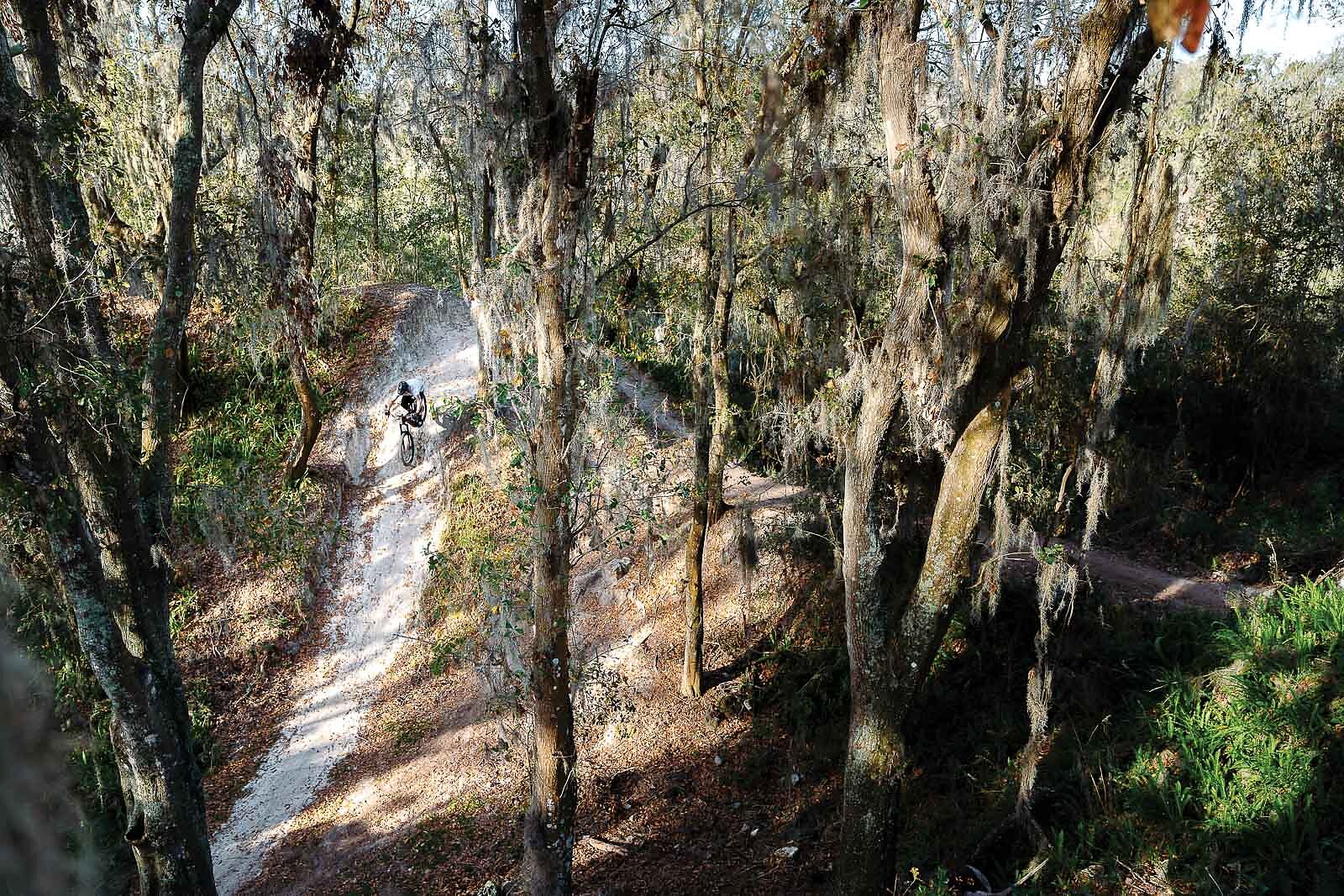
“I HAVE BEEN VERY FORTUNATE TO HAVE HAD BOTH SKATING AND BIKES BE MY WORK; IT’S NEVER REALLY FELT LIKE ‘WORK.’” —MIKE FRAZIER
As his cycling experience grew, his technical skills improved too. The bike had become more than just rehab from injury or tragedy for Frazier, and as his tires spent more and more time on dirt, the parallels he drew between mountain bikes and skating only flourished.
During the summer, he was either back on the road for the Vans Warped Tour or at Camp Woodward in central Pennsylvania as the resident pro. In the off-season, Frazier picked up a day or two a week at AJ’s Bikes with Rutledge. But, with a young son at home, life on the road became less attractive. Perhaps sensing a need for a change in their old friend’s life, Darrin and Heather extended an offer for him to join the team at AJ’s Bikes on a fulltime basis. So, in 2014, Frazier officially rolled away from his professional skateboarding career to focus completely on bikes, family, and his local community. He left behind a legacy of gnarly tricks that still influence today’s best vert skaters.
Free from the burdens of a hectic touring schedule and sponsorship obligations, Frazier channeled his tenacity into the local trail scene. On any given early morning, he’s likely churning out the first pedal strokes of a ride with coworkers and friends before heading in for a day at the shop.
“I have been very fortunate to have had both skating and bikes be my work; it’s never really felt like ‘work,’” he said.
With the trails of Alafia River State Park just a short drive from the shop, Frazier often joins a tight-knit crew of AJ’s Bikes employees and local riders. And when the group isn’t pumping out hot laps before work, they work to maintain and expand the trail network’s features. Alafia was developed on an abandoned phosphate mine, which means its terrain has unique undulations in elevation not found elsewhere in Florida. Frazier and other fellow trailbuilders in the area have taken full advantage of the land, carving drops and technical bench cut lines into the steep shelves left from the mining operations.
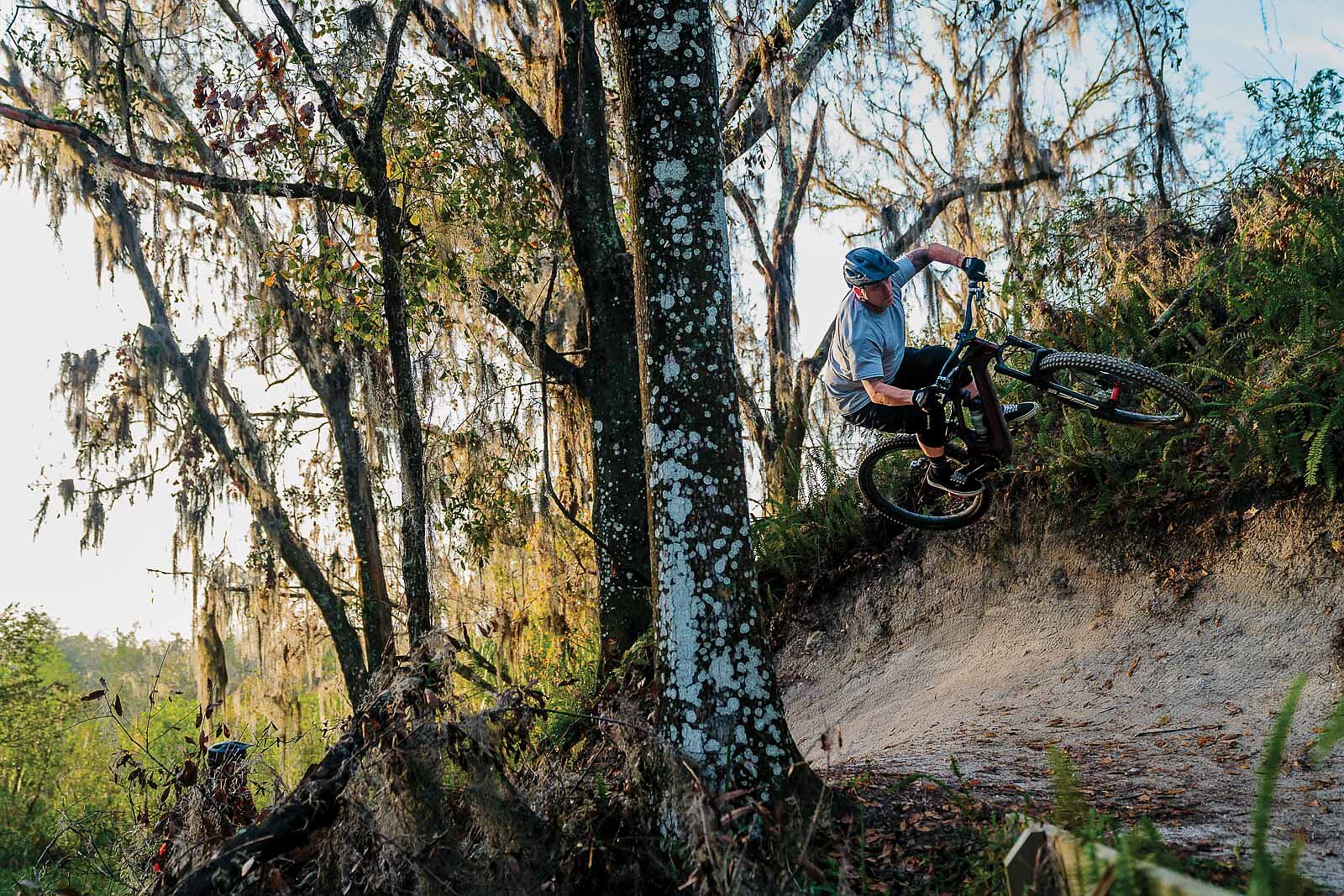
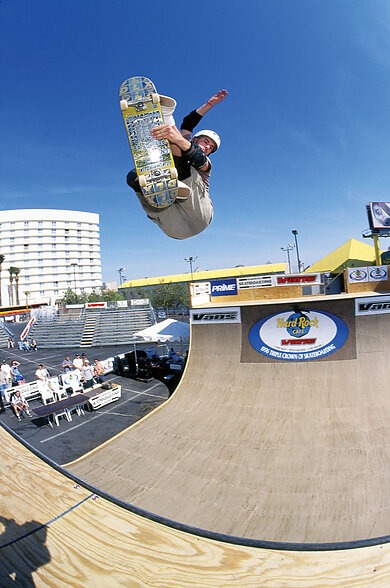
Recently, Alafia added a full-time trail boss position held by Angelo “Geo” Giambrone, a former coworker of Frazier’s who was already putting in a lot of volunteer hours. Giambrone now spends 40 hours a week in a salaried position tending to the trails.
“Almost every day we ride, there is something new that we didn’t see the day before because of Geo’s work,” Frazier said.
When Hurricane Ian wreaked havoc across Florida’s Gulf Coast, it left more than 200 trees scattered on Alafia’s trails. When the park gave Giambrone the green light, he, Frazier, and a dedicated group of volunteers began cleaning up the mess. And once the trees were gone, the crew kept working—repairing some of the park’s most popular features and adding new ones in the process.
“Having Mike out there is great,” Giambrone said. “It’s hard to find people that passionate— when he is into something, he’s all in.”
A steady rotation of volunteers has come and gone through the years, so Frazier and Giambrone have bonded over their mutual dedication to the trails of Alafia.
Florida’s mountain bike scene continues to grow and evolve. Just down the street from Alafia is Balm Boyette Scrub Nature Preserve, which offers fast and flowy trails. To the northwest of there—about a 45-minute drive from Tampa— is Loyce E. Harpe Park, formerly known as the Carter Road trails, with man-made features and plenty of jumps.
When Frazier isn’t at the shop or on the trails, he often spends afternoons with longtime friend and fellow former pro skater, Phil Hajal. Hajal’s backyard houses a perfectly crafted vert ramp, and he regularly hosts sessions that blend longtime legends with the next generation of upcoming skaters. Frazier’s approach to skating has changed very little and his ability to meld technical lip tricks with warp speeds is still awe-inspiring. Whether on the ramp or on the trails, the sensation is one and the same for him. After all, going fast and taking chances is just as intoxicating on two wheels as it is on four.
“There are so many skaters I meet who are riding now,” Frazier said. “It’s that same feeling as skating a ramp or a bowl or hauling ass and popping a big ollie—I get that same rush when I’m on my mountain bike.”
